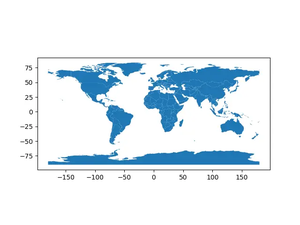Introduction
In the vast universe of data manipulation using Python, the Pandas library emerges as a cornerstone for analysts and data scientists alike. Among its arsenal of features, the DataFrame.bfill() method stands out as a powerful tool for handling missing data. This tutorial aims to elevate your understanding of the bfill() method from basic to advance, enriching your Pandas proficiency.
Working with DataFrame.bfill()
DataFrame.bfill(), short for backward fill, is a method used to fill NA or NaN (Not a Number) values in a DataFrame with the next valid observation across a specified axis. It’s particularly useful for time series data where the continuity of data points is crucial for accurate analysis. Before diving into examples, ensure you have Pandas installed:
pip install pandasBasic Usage
Let’s start with a straightforward example to see bfill() in action. Imagine a DataFrame with some missing values:
import pandas as pd
import numpy as np
df = pd.DataFrame({
'A': [1, np.nan, 3, np.nan, 5],
'B': [np.nan, 2, np.nan, 4, np.nan],
'C': [np.nan, np.nan, np.nan, 1, np.nan]
})
print(df)The output will look something like this:
A B C
0 1.0 NaN NaN
1 NaN 2.0 NaN
2 3.0 NaN NaN
3 NaN 4.0 1.0
4 5.0 NaN NaNTo fill the missing values backward from the next valid entry in each column, use df.bfill():
df_filled = df.bfill()
print(df_filled)This code fills the NaN values backwards and the output would be:
A B C
0 1.0 2.0 1.0
1 3.0 2.0 1.0
2 3.0 4.0 1.0
3 5.0 4.0 1.0
4 5.0 NaN NaNNote how the NaN values are filled with the next valid observation in their respective columns.
Advanced Usage
Moving towards more sophisticated examples, you can customize the behavior of bfill() using its parameters. Suppose you’re only interested in filling the NaN values in specific columns or limiting the number of filled rows. Let’s explore these scenarios.
Filling NaN in Specific Columns
Consider you only want to fill NaN values in column ‘A’ and ‘B’ but not in ‘C’:
df_filled_specific = df.bfill(axis=1, limit=1, columns=['A', 'B'])
print(df_filled_specific)This approach uses the axis, limit, and columns parameters to refine the backward fill process. The output emphasizes targeted application:
A B C
0 1.0 NaN NaN
1 NaN 2.0 NaN
2 3.0 NaN NaN
3 NaN 4.0 1.0
4 5.0 NaN NaNLimiting the Number of Fills
Sometimes, you might want to control the number of fills to avoid potentially inaccurate extrapolations of data. You can do this by setting the limit parameter:
df_limited_fill = df.bfill(axis=0, limit=1)
print(df_limited_fill)The limit parameter restricts the backward fill to just one subsequent NaN value per column. The altered DataFrame will demonstrate controlled filling:
A B C
0 1.0 2.0 NaN
1 3.0 2.0 NaN
2 3.0 4.0 1.0
3 5.0 4.0 1.0
4 5.0 NaN NaNTime Series Data
For time series data, maintaining the chronological integrity of the dataset is pivotal. Let’s simulate a simple time series DataFrame:
dates = pd.date_range('20230101', periods=5)
df_time_series = pd.DataFrame(np.random.randn(5, 3), index=dates, columns=['A', 'B', 'C'])
df_time_series.iloc[2, :] = np.nan
df_time_series.iloc[3, 1] = np.nan
print(df_time_series)Filling missing values in time series data with bfill() ensures continuity without compromising the sequence of dates. Applying df_time_series.bfill() yields:
df_time_series_filled = df_time_series.bfill()
print(df_time_series_filled)This example illustrates the method’s utility in ensuring data completeness in time-sensitive analyses.
Conclusion
Understanding the powerful DataFrame.bfill() feature in Pandas enhances your toolbox for handling missing data, especially in time series analysis. From basic applications to more advanced techniques, this tutorial showcased a broad spectrum of examples, equipping you with the knowledge to effectively apply the bfill() method in your data workflows.
